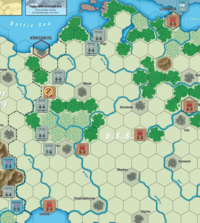Part 4: Turn 1 - Soviet Card Phase: The Red Front Collapses

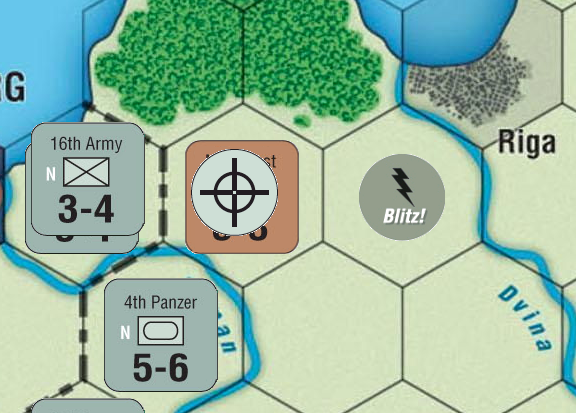
AGN vs Northwest Front
Combat odds: 11/3 = 3:1 - shifted +1 for Blitz!, +1 for Armour bonus - total of 5:1.
Roll: 6 - DD - Defender Destroyed
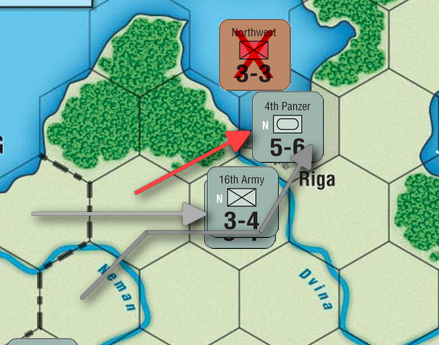
Army Group North manages to secure vital crossing on the Neman and moves in to smash the Soviet line. The 4th Panzer Group strikes right into the enemy HQ, breaking the Soviet communications structure in one fell swoop. Quite soon the 16th and 18th proceed to mop up scattered pockets of resistance, while the panzers push towards Riga. By the end of the week, they enter the city right on the backs of the panicking Soviet troops trying to grab the last train to the east. All in all, about a half of the entire Front is either killed, wounded or missing after just a couple days of operations and the unit has lost all semblance of cohesion.
Axis forces capture Riga!
Axis VPs now at 13, next Sudden Death threshold at 20 (Turn 3)
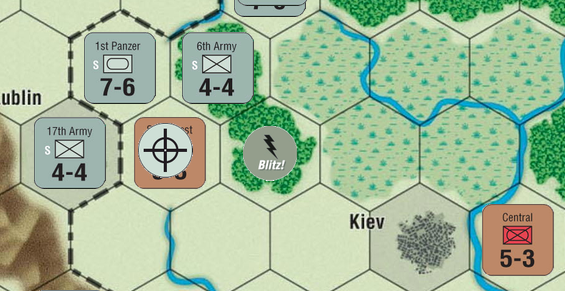
AGS vs Southwest Front
Combat odds: 15/5 = 3:1 - shifted +1 for Blitz!, +1 for Armour bonus - total of 5:1.
Roll: 3 - DS - Defender Shatters
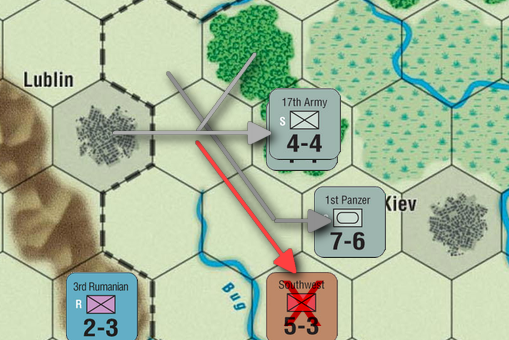
The AGS encounters a bit more resistance, but after a few days' clashes they begin enveloping Soviet positions near Lublin. The Front commander loses his temper and orders a general retreat, which soon turns into a complete rout. The Germans are so surprised by this unexpected collapse that they halt their advance, suspecting a trap. They quickly regain composure, but by then most of the men and equipment are evacuated. Still, the Soviet casualties number tens of thousands.
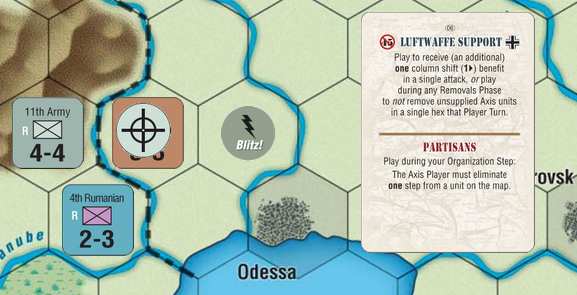
11th Army, 4th Rumanian vs South Front
Combat odds: 6/3 = 2:1 - shifted -1 for River, +1 for Blitz!, +1 for Luftwaffe Support card - total of 3:1
Roll: 3 - DR
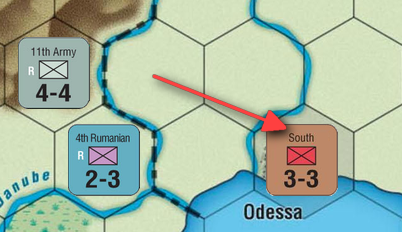
German and Rumanian forces perform massed artillery barrages and air strikes against Soviet positions and then shift to a limited offensive. Overextended Red Army forces quickly realise their positions are untenable, especially in the face of German forces pushing in from the north-west, and withdraw to defend Odessa. Casualties are serious, but units maintain cohesion and retreat in an orderly manner. The Axis forces in Rumania cannot exploit this, however, as their supply stocks do not permit an advance on a strategic scale.

The Luftwaffe represented something of a new quality in air force operations because it cooperated much more closely with the ground forces. Based on the experiences of the Spanish Civil War, it devised a number of tactics that allowed them to gain as much as possible from their air superiority. One of those conclusions was that level bombers do not allow for a precise enough ground attack. They're fine if you mass them and use them to blow up a city, but if you want to destroy actual enemy fighting forces, they're just not that good. This is why the Germans turned to dive bombing as a solution to all their problems.
Dive bombing was not exactly a new concept, but it was considered nigh suicidal - and with fairly good reason. It requires the bomber to release the bomb while speeding towards the ground, which obviously leaves a lot of room for a disaster. German engineers looked for a way to make it possible - and they came up with the Junkers 87, also known as the Stuka.
The Stuka was sturdy and outstandingly precise. It typically carried a 250kg bomb, which was enough to take on field strongpoints and enemy armour. It even had automatic dive brakes in case the pilot blacked out from too many Gs. Probably the most characteristic feature of the design, however, was the "Jericho Trumpet" - a wailing siren the Stukas sounded during their runs, allegedly installed by Hitler's personal command. It contributed greatly to boosting the terror factor of the plane and making it an immediately recognizable symbol of the Luftwaffe.
The problem with the Stuka was that it was slow and poorly armed, making it vulnerable to fighter aircraft. When the Axis lost air superiority, those things became sitting ducks.
Axis Removals Phase
No markers to remove.
Axis Detraining Phase
No units to detrain.

Soviets have no cards to discard, so they just draw 4.

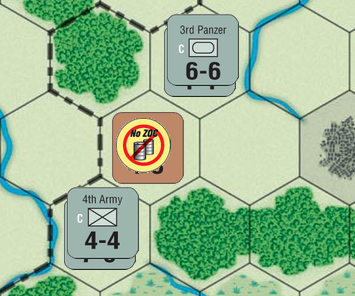
West Front is put out of supply.


The shattered Southwest Front returns for free. You may pay one card to rebuild the destroyed Northwest Front as well. They have to be placed in a city in the USSR that can trace a supply path, even in an enemy zone of control. They return Disorganized and cannot voluntarily attack this turn (unless you pay another card).
The STAVKA Commander may now also shift units between the southern and northern command, if he so desires.
I'm waiting for all that from Fangz until Saturday, 10 PM GMT. If he doesn't respond until 10 AM, any of his subordinates can make the decision in his stead (this is going to be standard procedure, nothing personal in any way).
